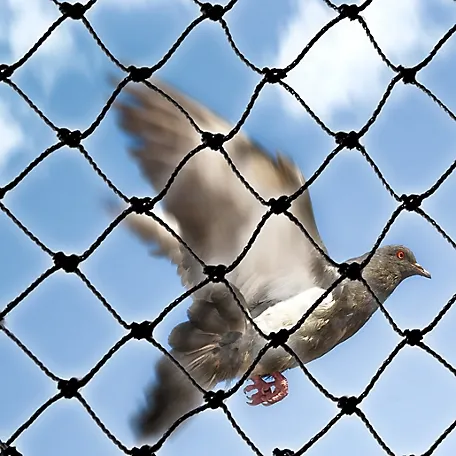-
 Afrikaans
Afrikaans -
 Albanian
Albanian -
 Amharic
Amharic -
 Arabic
Arabic -
 Armenian
Armenian -
 Azerbaijani
Azerbaijani -
 Basque
Basque -
 Belarusian
Belarusian -
 Bengali
Bengali -
 Bosnian
Bosnian -
 Bulgarian
Bulgarian -
 Catalan
Catalan -
 Cebuano
Cebuano -
 China
China -
 Corsican
Corsican -
 Croatian
Croatian -
 Czech
Czech -
 Danish
Danish -
 Dutch
Dutch -
 English
English -
 Esperanto
Esperanto -
 Estonian
Estonian -
 Finnish
Finnish -
 French
French -
 Frisian
Frisian -
 Galician
Galician -
 Georgian
Georgian -
 German
German -
 Greek
Greek -
 Gujarati
Gujarati -
 Haitian Creole
Haitian Creole -
 hausa
hausa -
 hawaiian
hawaiian -
 Hebrew
Hebrew -
 Hindi
Hindi -
 Miao
Miao -
 Hungarian
Hungarian -
 Icelandic
Icelandic -
 igbo
igbo -
 Indonesian
Indonesian -
 irish
irish -
 Italian
Italian -
 Japanese
Japanese -
 Javanese
Javanese -
 Kannada
Kannada -
 kazakh
kazakh -
 Khmer
Khmer -
 Rwandese
Rwandese -
 Korean
Korean -
 Kurdish
Kurdish -
 Kyrgyz
Kyrgyz -
 Lao
Lao -
 Latin
Latin -
 Latvian
Latvian -
 Lithuanian
Lithuanian -
 Luxembourgish
Luxembourgish -
 Macedonian
Macedonian -
 Malgashi
Malgashi -
 Malay
Malay -
 Malayalam
Malayalam -
 Maltese
Maltese -
 Maori
Maori -
 Marathi
Marathi -
 Mongolian
Mongolian -
 Myanmar
Myanmar -
 Nepali
Nepali -
 Norwegian
Norwegian -
 Norwegian
Norwegian -
 Occitan
Occitan -
 Pashto
Pashto -
 Persian
Persian -
 Polish
Polish -
 Portuguese
Portuguese -
 Punjabi
Punjabi -
 Romanian
Romanian -
 Russian
Russian -
 Samoan
Samoan -
 Scottish Gaelic
Scottish Gaelic -
 Serbian
Serbian -
 Sesotho
Sesotho -
 Shona
Shona -
 Sindhi
Sindhi -
 Sinhala
Sinhala -
 Slovak
Slovak -
 Slovenian
Slovenian -
 Somali
Somali -
 Spanish
Spanish -
 Sundanese
Sundanese -
 Swahili
Swahili -
 Swedish
Swedish -
 Tagalog
Tagalog -
 Tajik
Tajik -
 Tamil
Tamil -
 Tatar
Tatar -
 Telugu
Telugu -
 Thai
Thai -
 Turkish
Turkish -
 Turkmen
Turkmen -
 Ukrainian
Ukrainian -
 Urdu
Urdu -
 Uighur
Uighur -
 Uzbek
Uzbek -
 Vietnamese
Vietnamese -
 Welsh
Welsh -
 Bantu
Bantu -
 Yiddish
Yiddish -
 Yoruba
Yoruba -
 Zulu
Zulu
Effective Solutions for Agricultural Shade Netting in Modern Farming Practices
The Importance of Agricultural Shade Netting
In recent years, the agricultural industry has faced numerous challenges, from climate change to pest infestations. As farmers strive to maintain productivity and preserve crop quality in the face of these challenges, one innovation has gained significant attention agricultural shade netting. This material serves as a vital tool for farmers, providing multiple benefits that enhance crop growth and improve overall yield.
Understanding Agricultural Shade Netting
Agricultural shade netting consists of lightweight, woven material designed to provide shade and protection to crops from harsh environmental factors. These nets come in various densities and colors, allowing farmers to choose the optimal type for their specific crop requirements and local climate conditions. Typically made from UV-stabilized polyethylene, shade nets are durable, long-lasting, and capable of withstanding various weather conditions.
Benefits of Shade Netting
1. Temperature Regulation One of the primary benefits of shade netting is its ability to regulate temperature. When crops are exposed to excessive sunlight, they can suffer from heat stress, leading to reduced growth and lower yields. Shade netting reduces the intensity of sunlight reaching the plants, promoting a cooler microclimate that supports healthy growth. In hot climates, this is particularly crucial for temperature-sensitive crops such as lettuce, strawberries, and young seedlings.
2. Water Conservation With increasing water scarcity in many regions, efficient water management is critical for sustainable agriculture. Shade nets help to reduce evaporation from the soil surface, retaining moisture for longer periods. This not only conserves water but also promotes better root development, leading to stronger and healthier plants. Farmers can thus achieve more efficient irrigation practices, maximizing output while minimizing resource use.
agricultural shade netting

3. Pest and Disease Management Another significant advantage of shade netting is its role in pest control. The physical barrier created by the netting can deter pests such as aphids, beetles, and other harmful insects from reaching the crops. This added layer of protection reduces the need for chemical pesticides, promoting organic farming practices and yielding healthier produce. Moreover, by minimizing moisture on the foliage, shade nets can help prevent the development of fungal diseases.
4. Improved Crop Quality The use of shade netting can enhance the quality of harvested crops. By diffusing sunlight, the nets prevent sunburn on fruits and vegetables, resulting in a better appearance and improved flavor profile. Crops grown under shade nets often exhibit more uniform growth, leading to higher market value and increased profitability for farmers.
5. Crop Diversification Shade netting allows farmers to diversify their crop selection. With controlled shade, it becomes feasible to grow various crops that would otherwise be unsuitable for the local climate. For instance, shade-loving plants like certain herbs, flowers, and vegetables can be cultivated in regions that receive high levels of sunlight. This diversification not only increases a farmer's income but also enhances food security within communities.
Conclusion
In summary, agricultural shade netting represents a transformative solution for modern farming practices. By mitigating the adverse effects of extreme weather conditions, conserving water, and enhancing pest management, shade nets empower farmers to produce high-quality crops efficiently. As global agricultural demands continue to rise, the adoption of innovative tools such as shade netting is essential for ensuring sustainable farming and food security.
Farmers looking to improve their yields and maintain sustainable practices should consider investing in agricultural shade netting as a practical and effective tool. With its myriad benefits, shade netting not only supports crop development but also contributes to the resilience of agricultural systems amid a changing climate. As we look to the future of farming, embracing such innovations will be key to overcoming the challenges that lie ahead.
-
Shipping Plastic Bags for Every NeedNewsJul.24,2025
-
Safety Netting: Your Shield in ConstructionNewsJul.24,2025
-
Plastic Mesh Netting for Everyday UseNewsJul.24,2025
-
Nylon Netting for Every UseNewsJul.24,2025
-
Mesh Breeder Box for Fish TanksNewsJul.24,2025
-
Expanded Steel Mesh Offers Durable VersatilityNewsJul.24,2025











